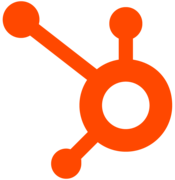
Best Sales Engagement Platforms (SEPs) 2025
What are Sales Engagement Platforms (SEPs)? Sales engagement platforms (SEPs) have emerged as the next evolution of email tracking tools combined with elements of sales acceleration and sales enablement technology. Products in this category are primarily oriented towards salespeople. But, similarly to account-based marketing (ABM) software, SEPs also bring together sales and marketing efforts to produce high quality targeted sales outreach. SEPs are increasing in popularity among sales ...
We’ve collected videos, features, and capabilities below. Take me there.
All Products
Videos for Sales Engagement
Learn More about Sales Engagement Software
What are Sales Engagement Platforms (SEPs)?
Sales engagement platforms (SEPs) have emerged as the next evolution of email tracking tools combined with elements of sales acceleration and sales enablement technology. Products in this category are primarily oriented towards salespeople. But, similarly to account-based marketing (ABM) software, SEPs also bring together sales and marketing efforts to produce high quality targeted sales outreach.
SEPs are increasing in popularity among sales development teams due to their ability to integrate and streamline sales outreach activities. Prominent vendors in the CRM and email tracking/marketing tools space, such as Salesforce, have added purpose-built SEP products to their product portfolios.
The primary goal of SEPs is to help sales reps deliver high-quality customer interactions across communication channels and convert prospective leads into customers. Many of these products include features to increase sales velocity and optimize productivity. Optimizing sales enablement content and quality of customer interactions is another focus of sales engagement software.
Sales Engagement Platform Functionality
Individual products in this category offer a diverse range of functions and capabilities. However, the key feature unifying these products is a single, cohesive interface for planning, executing, tracking, and analyzing customer interactions across digital touchpoints and channels. These may include email, phone calls, social media (LinkedIn in particular), SMS/text, video, and live chat.
The primary sales communication channel has and continues to be email. Many vendors have created their SEPs around this medium. Accordingly, many SEP products have a set of email tracking features at their core, with additional features like CRM software integration, multi-channel support, A/B testing for messaging, and customer engagement analytics.
Another key function of sales engagement software is the ability to design and schedule sales activity sequences across multiple touchpoints and channels. This allows sales reps to craft personalized content for leads. At the same time it automates part of their workflow, which streamlines the sales cycle. More data on lead and account engagement and a faster sales cycle are two of the main ways SEP users can think about ROI.
Sales Engagement Platforms Vs. CRM
One way to conceptualize the role of an SEP within a sales technology stack is to picture it sitting right on top of customer relationship management (CRM) software. The sales engagement platform functions as a conductor, allowing sales reps to coordinate and share all of the customer interaction data gathered from various communication channels. The user’s CRM acts as the data repository sitting below the sales engagement software.
Many SEP products have the ability to integrate with CRM software. Some products are built directly within the CRM infrastructure. Others may turn the salesperson’s email inbox into a sales engagement hub.
For salespeople, a key benefit of using a sales engagement platform is that it minimizes the amount of time spent toggling back and forth between different applications, manually entering data, and searching for lead-specific information across multiple interfaces. An SEP’s unified interface and centralized data organization capabilities are driving factors for adoption and ROI.
Sales Engagement Platform Features
Most SEPs include a basic set of features centered around email tracking and monitoring. Many products also include other communication channels such as phone, LinkedIn, and SMS/text.
- Compatibility with email platforms: The sales email tracking software works with the sales rep’s email account (e.g. Gmail or Outlook).
- CRM integration: Automatic logging of customer interaction data across communication channels in CRM software (e.g. Salesforce), and access to CRM data from within the SEP interface.
- Email tracking metrics: Provides accurate tracking for opens, reads, click-throughs, etc.
- Sales email engagement tracking: Users can track sales content engagement at a more granular level, such as how long readers spent looking at attachments or particular slides in presentations.
- Email and content templates: Sales reps can set up and customize reusable email templates.
- Sales cadence: Design and sequence outreach campaigns around desired intervals or outcomes across communication channels (e.g. email, phone, SMS/text)
- Cadence progression automation: Automate progression of leads through cadences based on response rules (e.g. stop cadence if lead responds).
- Sales campaign management: Sort templates, plans, leads, or cadences into campaigns.
- Sales email reports: Includes individual and/or team reports on sales email metrics.
- Sales email and content recommendations: The tool makes recommendations about the next best actions to take and content suggestions based on email/call engagement activity and other sales intelligence.
- Sales email scheduling: Reps can schedule emails to be sent later.
- Sales email automation: Allows reps to set up automatic follow-up messages.
- Follow-up reminders: Sales reps can resend emails to themselves (appear at top of inbox) or schedule reminders to follow up on certain emails.
- Click-to-call: Sales reps can call a prospect or customer from within their email or sales engagement platform.
- Sales intelligence: Information about previous or current prospective customers, sometimes from third party data sources, for sales reps to create prospect profiles.
Advanced Features
Some vendors offer more advanced features that focus on intelligent customer engagement analytics to optimize content and quality of customer interactions.
- Conversation/meeting intelligence: Ability to analyze sales conversations, identify what the most successful sales reps are doing, and use those practices to coach other (or new) sales reps.
- Customer engagement analytics: Ability to analyze customer interaction metrics and see which types of interactions or channels have the most positive impact on customer experience. This is a more robust, comprehensive view than just email tracking metrics.
- A/B message testing: Ability to analyze the content of sales campaigns across channels (especially phone and email) in order to optimize messaging and convert more prospects into customers. Examples of testing metrics are message script and length, call length, time of day, and style of message (formal or more personal).
Sales Engagement Platform Comparison
Before investing in an SEP, consider these two key factors:
- Price: do you need a fully-featured sales engagement platform that will allow your sales reps to reach out to prospects and customers across all channels? Or are you looking for a robust but not all-encompassing platform to help streamline BDR/SDR processes and outreach. Some SEPs include advanced features like A/B testing for email messaging that can increase the cost.
- Integrations: do the sales engagement platforms your considering integrate with your CRM and email service provider? A large part of what SEPs do is help sales teams integrate and streamline processes across the various systems they work with every day. So make sure the SEP you’ve selected will work with the other sales and marketing tools already in your tech stack.
Pricing Information
Many SEP products are priced on a monthly subscription model, per sales rep. Basic products that may only include traditional email tracking tools can cost as little as $10 per user per month. The more advanced products which offer CRM integration, multi-channel conversation management, and intelligent analytics capabilities are more expensive and can cost upwards of $100 per user per month.
Many vendors do not include pricing information on their website but will provide a quote upon request. Some products also have a free trial period usually lasting about a month.
Sales Engagement FAQs
What does sales engagement software do?
Sales engagement platforms are designed to help sales teams streamline and automate customer and prospect interactions across digital channels. These platforms typically integrate with the user’s CRM system and provide sales email tracking metrics. Depending on the product, it may also include capabilities such as:
- sales enablement content recommendation
- sales cadence creation
- campaign management
- Email scheduling
- Message A/B testing
- Follow-up reminders
- Click-to-call
- Sales intelligence
What are the best sales engagement platforms?
According to end-user feedback on TrustRadius, the top sales engagement platforms are:
Reviews of specific products and other software alternatives are available on the sales engagement platforms category page. For a list of other popular products, check out the SEP TrustMap.
What are the benefits of using a sales engagement platform?
Sales engagement software has a number of benefits for sales teams. These platforms can help SDRs/BDRs and account reps plan and execute their outreach. Most SEPs include features that allow reps to build out sales cadences, create sales emails using templates, and track engagement across digital touchpoints (e.g. email open and click-through rates).
They also help sales reps increase their productivity levels and save time by automating certain parts of the outreach process. Learn more about SEP platform features and considerations on the sales engagement platforms category page.
How much does sales engagement software cost?
Most sales engagement software providers charge per user per month, though not all vendors disclose pricing information on their websites.
Depending on the number of users and breadth of features required, these products can range from $10 per user per month up to $100 per user per month.
























